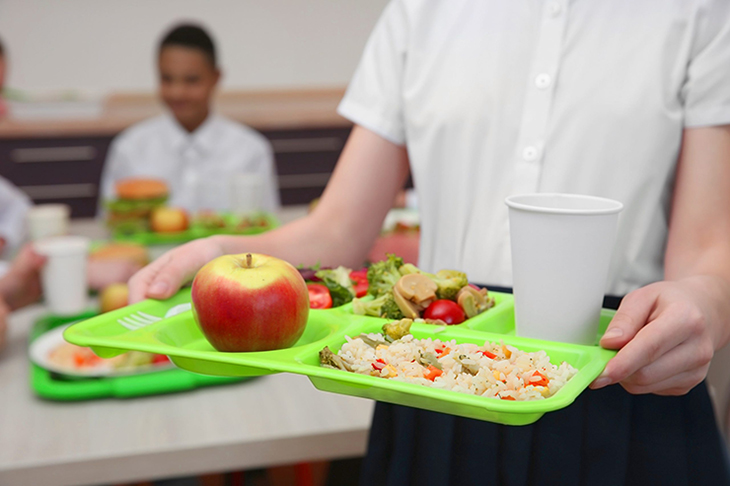

Tackling Child Poverty With a Hot Meal
In a bold new policy shift, the United Kingdom’s recently elected Labour government has unveiled a significant expansion of its free school lunch program, promising to lift 100,000 children out of poverty. Beginning with the 2026 academic year, all students from households receiving Universal Credit will be eligible for one nutritious free meal each school day. This reform, described by officials as a “historic step,” is expected to benefit an additional 500,000 children across England.
This initiative not only responds to the pressing issue of food insecurity but also challenges longstanding bureaucratic hurdles that previously limited access. The move replaces an outdated eligibility system that critics say unjustly excluded many needy families based on rigid income thresholds. Education Secretary Bridget Phillipson affirmed the government’s intent, stating, “Today’s historic step will help us to deliver excellence everywhere, for every child and give more young people the chance to get on in life. Background shouldn’t mean destiny.”
From Arbitrary Thresholds to Inclusive Access
Until now, access to free school meals was largely confined to children from families earning less than £7,400 annually. This cutoff, however, ignored the stark realities facing many households earning just above that amount, who often struggle to meet basic expenses. A family earning £8,000 a year, for example, may still be unable to afford daily school meals for their children, yet remained ineligible under the old rules.
The new policy corrects this inequity by tying eligibility to Universal Credit status rather than income alone. Universal Credit, which replaced several welfare benefits in the UK, offers financial assistance to people with low or no income and less than £16,000 in savings. By aligning the meal program with Universal Credit, the government is simplifying access and removing artificial barriers to support.
A Savings Lifeline for Families
Beyond the social implications, the financial relief offered by the program is substantial. For many families, the cost of daily school lunches can add up to £500 per year per child—money that could instead go to housing, utilities, or other essentials. By removing this burden, the policy helps prevent working families from slipping further into hardship.
“Free school meals are a basic yet powerful tool to reduce inequality,” said Sarah Hughes, a policy expert at the Child Poverty Action Group. “They ensure that children are nourished and able to learn, regardless of their family’s circumstances. Expanding access is a logical and long-overdue step in the right direction.”
From Rashford to Reform: A Movement Years in the Making
The roots of this reform stretch back to the tumultuous period of the COVID-19 pandemic, when footballer Marcus Rashford emerged as an unexpected champion of child welfare. In 2020, Rashford criticized then-Prime Minister Boris Johnson for curtailing meal support during school holidays, leading a high-profile campaign that forced a government U-turn. His activism helped push school meals into the national conversation, spotlighting hunger in some of the UK’s most vulnerable communities.
“I know what it means to go hungry,” Rashford once said in an interview with The Guardian. “It’s a very real experience for a lot of kids today. If I can use my platform to change that—even a little bit—I have a responsibility to do so.” His campaign earned him an MBE (Member of the Order of the British Empire) for services to vulnerable children.
Now, under Prime Minister Sir Keir Starmer’s Labour administration, these calls for change are finally translating into concrete policy. Starmer, who campaigned on pledges to reduce inequality and rebuild the welfare safety net, views this expansion as foundational to his government’s vision of social justice.
Quality on the Menu
Importantly, the new expansion is not just about quantity—it’s also about quality. The government has committed to fully funding the initiative and improving the nutritional value of school meals. This includes ensuring access to fresh fruits and vegetables, culturally appropriate dishes, and meals tailored to dietary needs. Critics had long complained that previous efforts, while well-intentioned, often provided substandard or highly processed food.
A government spokesperson confirmed, “The goal is not simply to fill stomachs, but to nourish minds. Children need real, healthy food to thrive both academically and socially.”
Looking Ahead: More Than a Meal
Analysts see this as a long-term investment in the country’s future. Studies show that proper nutrition in childhood is linked to better academic performance, improved mental health, and lower rates of obesity and chronic disease. Moreover, the psychological assurance of knowing there will be a hot meal every day helps reduce stress at home, fostering a better environment for learning and growth.
While critics from fiscally conservative circles have raised questions about the cost of the initiative, the Labour government argues that the social and economic return on investment outweighs the expenditure. “Preventing poverty is far less expensive than fixing it later,” said Dr. Helen Brookfield, an economist at University College London.
By broadening eligibility, enhancing food quality, and fully funding implementation, the UK’s expanded free school meals program represents more than just a policy update—it is a statement of national priorities. In the words of Bridget Phillipson, “No child’s future should be determined by their lunch tray.”
What are your thoughts? Please comment below and share this news!
True Activist / Report a typo







